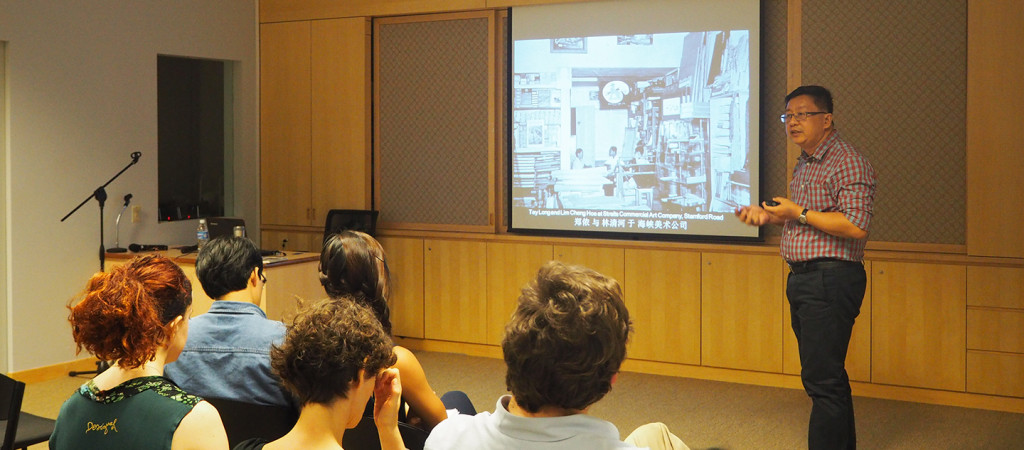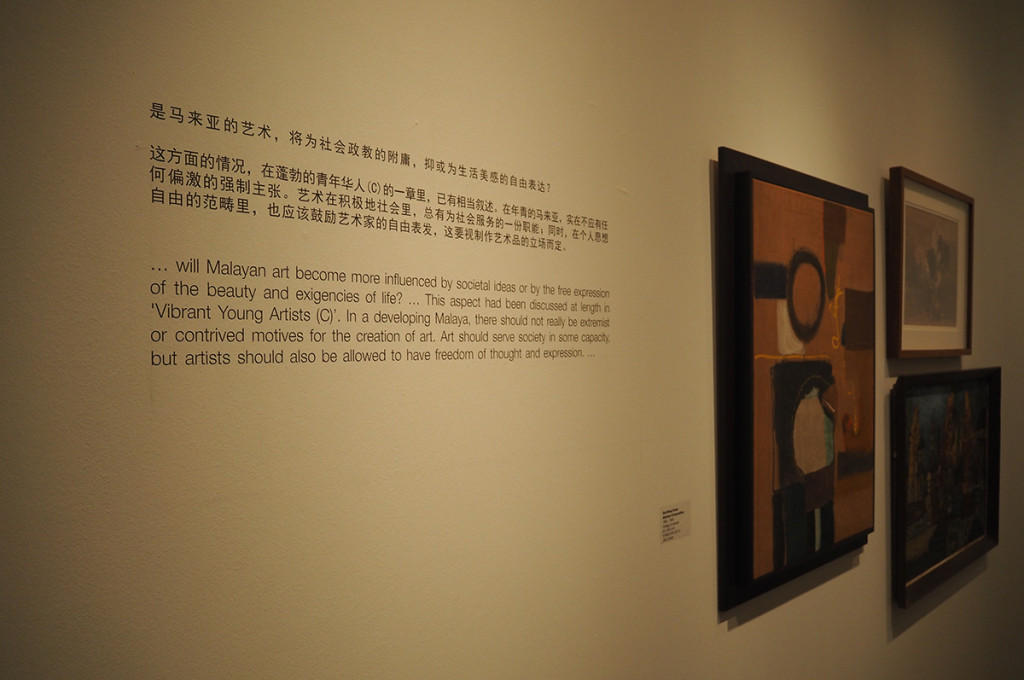Shades of Nanyang
On 10 April 2015, Yale-NUS College invited Art Historian Dr Lai Chee Kian to share about post-war Southeast Asian art in Singapore and Malaysia.
Basing his talk on the idea of ‘Nanyang’, Dr Lai, an expert in the histories of art, architecture, settlements, urbanism and landscapes in Southeast Asia, spoke about how the term generally referred to the overseas Chinese in Southeast Asian.
Noting that ‘Nanyang’ was also a projected ‘style’ that is seen to be infused with the specific characteristics of climate and culture distinctive to the region, the talk explored the broader frameworks of the Nanyang culture prevalent at the time, which he used to contextualise the art that was being produced.
“For far too long, the term ‘Nanyang’ has been encapsulated,’ said Dr Lai. “And as a good liberal arts college would teach you, we need to place art in its setting, and question it.”
Dr Lai shared how there were different models of ‘Nanyang’, depending on the periods of time, and how the artists were influenced at these points in time. He discussed how the art work of the 1950s – 1960s differed from those in the 1960s – 1970s, where there was a shift from social realism to abstract expressionism.
He also discussed the Nanyang art in relation to historical events, such as the Chinese Revolution of 1949 which led to many overseas Chinese struggling to find a new identity. Singapore and Malaysia, where almost 80 percent of overseas Chinese were based, became largely known as the region of ‘Nanyang’ as these overseas Chinese were the ‘last bastions of contact with China’ at that point.
Held at the NUS Museum, the talk was conducted in conjunction with the “Between Here and Nanyang, Marco Hsu’s Brief History of Malayan Art” exhibition, based on the book A Brief History of Malayan Art by Marco Hsu.
The exhibition at the NUS Museum
The exhibition showcases some of the art pieces by important ‘Nanyang’ artists that Dr Lai discussed during his talk, including Chen Chong Swee, Georgette Chen, Lim Hak Tai and Liu Kang.
The talk was held under the auspices of the Chen Chong Swee Asian Arts Fund, made possible with a gift from the family of the late Mr Chen Chong Swee to the College.
Dr Lai spoke fondly of Cheng Chong Swee’s art works, stating that the 1952 Balinese Women was one of his first interactions with the works of the late artist.
“I really like his works, because I feel that it really goes into the local subject matter,” Dr Lai added.
Associate Professor of Humanities Derek Heng, who organised the talk, shared that Dr Lai’s talk is the first of a series that will be happening over the next three years. He added that the endowment will also be going to conducting workshops and publishing books related to Southeast Asian art.
Professor Heng said, “The Chen Chong Swee Asian Arts Fund is really helping to jumpstart the Southeast Asia programme in Yale-NUS.”







